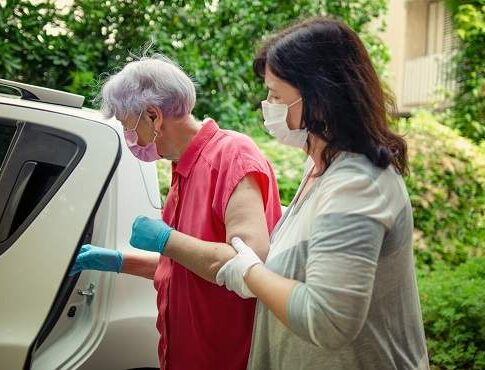According to the National Council on Aging (NCOA), falls are the leading cause of fatal and non-fatal injuries for older Americans. One in four older Americans experiences a fall annually.
Falls threaten seniors’ safety and independence and are a substantial medical risk that can result in hip fractures, cuts and sometimes life-threatening head and brain injuries. Oftentimes a fall is so scary that seniors may avoid certain activities because they are worried that they’ll fall again.
The data is startling. Sixty and Me, an online community of 500,000 women over 60, provided us with some very helpful information that explores basic statistics related to falls in older Americans, as well as the costs and consequences.
If you are a family caregiver, the following quick guide to falls prevention can help keep your aging loved one safe inside the place they call home and provide you with comfort and peace of mind.
Quick Guide to Preventing Falls
Although falls are not a normal part of aging, most of us lose some coordination, flexibility and balance as we age. This can increase our potential to fall. There are some ways to help prevent falls in your elderly loved one.
Remove clutter. The simplest way to prevent falls is to remove clutter from floors, hallways, staircases and sidewalks around your loved one’s home. Unnecessary clutter can be a tripping hazard. Plus, your loved one is at risk of losing their balance and falling when they bend down to pick up the clutter.
Fix trip hazards. Walk through every room of the house and identify potential trip hazards. Fix, remove, or repair items such as loose carpets, throw rugs, uneven flooring, electrical cords, or unnecessary furniture, as well as things like old newspapers and magazines that may be piled up.
Install grab bars and handrails. Hire a handyman or have a family member install grab bars by toilets and bathtubs and handrails in stairways and hallways. A bath seat and a nonslip mat in the bathtub or shower can also help. Most seniors have lived in their homes for such a long time they may have never thought about making simple home modifications that could make aging in place a viable and safer option.
Install proper lighting. Poor lighting is another hazard that can cause falls. Install brighter light bulbs in each room for everyday use. Add night lights in bedrooms and bathrooms for better guidance at night.
Encourage shoes, even in the home. Preventing falls at home can be as simple as wearing sensible shoes. Socks might be more comfortable, but they can also be slippery. Encourage your loved one to wear shoes, even inside the house.
Urge your older adult to slow down. Many falls at home are caused by your elderly loved one moving too quickly while getting in or out of a seated position. It is important for them to take their time. Advise them to pause before sitting or standing to make sure they are steady before moving. Additionally, some prescriptions and over-the-counter medications may cause dizziness or dehydration, which can lead to a fall.
Find a local office near you to request a free home visit and to learn more about our in-home care services to support you and your loved one. Our caregivers can be that extra helping hand for times when you cannot be there.
Sources:
